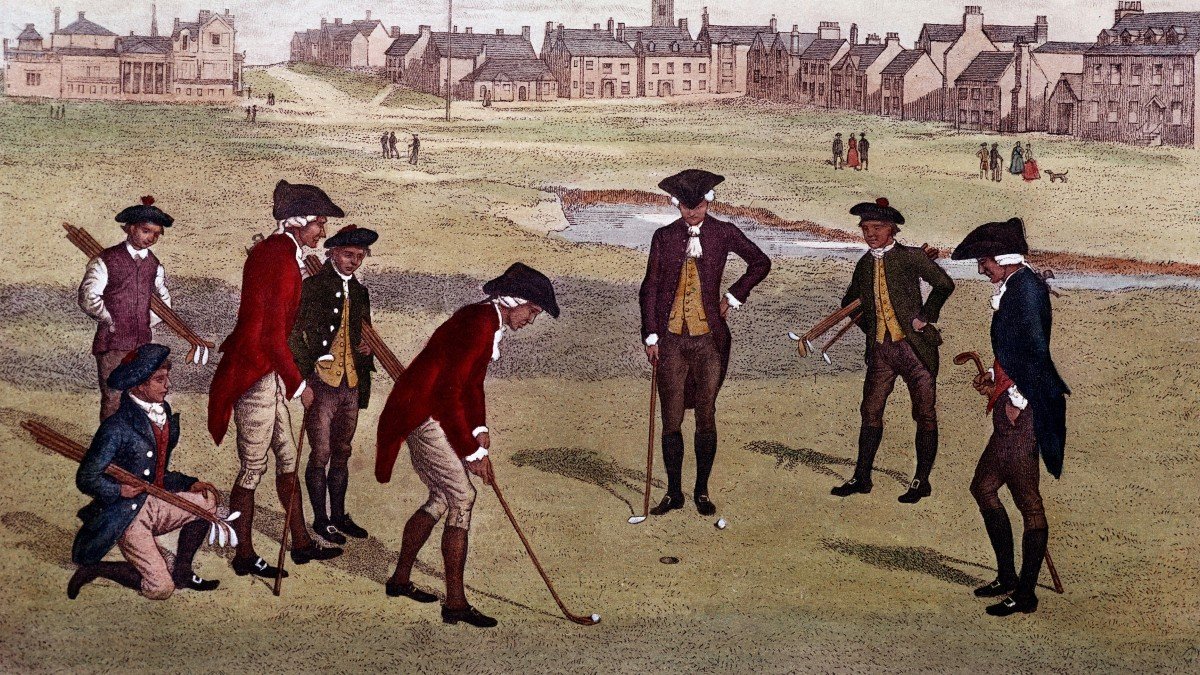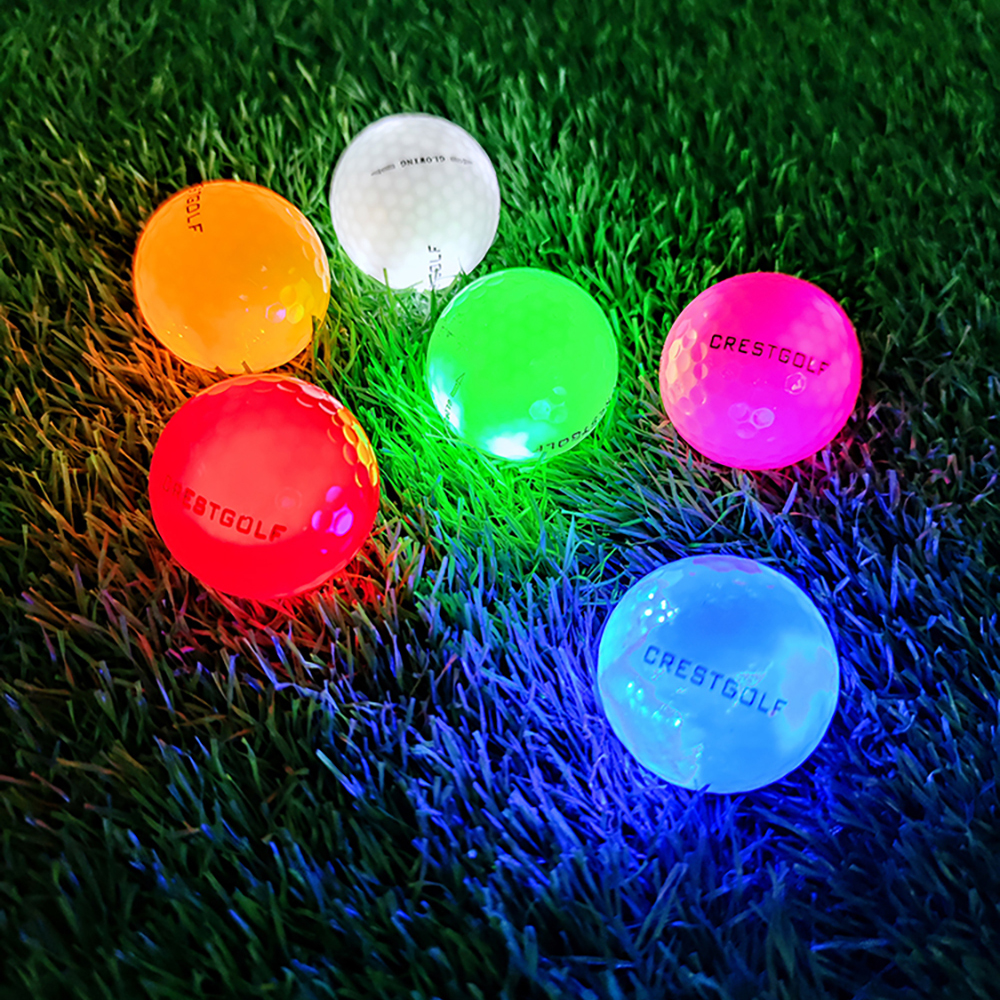Golf is a game with a long and varied history, with evidence of its existence as far back as the 15th century. Over the centuries it has evolved, becoming the beloved and popular sport that we know and recognize today, albeit with distinct influences from different parts of the world.
Let’s take a look at the fascinating and intriguing history of golf.
Black Powerbilt 14-Way Golf Stand Bag
Carry Your Golf Essentials in Style with Powerbilt 14-Way Golf Stand Bag in Black!
Product information
€178.15
Product Review Score
4.7 out of 5 stars
232 reviewsProduct links
Origins of the Game
Golf is often believed to have originated from the game of “stick-and-ball” or “Gof”, which dates back to 14th century Scotland. The first recorded reference to golf in writing was found in 1457, which is believed to have originated from a royal edict by King James II of Scotland, who banned golfing as a distraction from practicing archery.
Although the origin of the game is uncertain, it is thought that the true origin of golf may have derived from a much older golf-like game called Konfusion. In Konfusion, players hit a stuffed leather ball with a club until it reached a hole in the ground. As the popularity of the game increased, the rules and regulations of it became increasingly formalised.
By 1754, golf was a recognized sport in Scotland, and the Royal and Ancient Golf Club was formed in 1744. The club defined and standardised the rules of the game for golfers and came to be known as the ruling body of golf.
By the 19th century, golf had become an incredibly popular worldwide sport. The first international tournament was held in 1873 and eventually the British Open Championship was founded in 1860. The modern era of golf is often said to have begun in 1860, when the first set of rules were published by the R&A.
Middle Ages Development
The sport of golf is believed to have originated from Scotland in the Middle Ages. During this period, similar games were played in the Netherlands, China, and other areas of Europe. On March 6, 1457, King James II of Scotland issued a decree that outlawed the game of golf in an attempt to encourage his citizens to focus on archery practice instead. However, the game was so popular that in 1502, King James IV of Scotland repealed his predecessor's ban on the sport.
The first known reference to golf with “a golf” was in the year 1552. In the same year, Mary Queens of Scots was recorded playing golf at St Andrews Links. By the end of the 17th century, golf became popular throughout Scotland and was played to a standardised format, setting the stage for the future rules of the sport.
The modern game of golf is heavily based on the rules set down by the Honourable Company of Edinburgh Golfers (now the Royal and Ancient Golf Club) in 1744, though the game has been modified over the years by the USGA and The R&A. The first Open Championship was held in 1860, leading to the development of professional golfers.
Beginnings of Professional Golf
Golf has a long and rather complicated history of professional leagues. The first organized professional golf event was a tournament at Blackheath Club in London, England in 1883. Later that same year, the British Professional Golfers Association (PGA) was formed.
In 1901, the Professional Golfers' Association of America (PGA) was formed in New York City by a group of prominent players and golf club owners, including golf professional Walter Hagen. The PGA of America quickly became the standard-bearer of professional golf in the US, organizing and sanctioning individual tournaments.
Until the 1970s, professional golf was mainly the domain of elite British and American golfers. But the game began to reach new audiences and international fans in the late 20th century as foreign players began to enter the tournaments. The first golfing "superstar" from this era was Jack Nicklaus, who made his professional debut in 1962.
Today, professional golf is an international phenomenon. There are several major professional leagues, including the PGA Tour, the European Tour, and the Japan Golf Tour. Professional golf is one of the most lucrative sports in the world, with many players earning millions of dollars in prize money and endorsements.
Night Glow LED Golf Balls - 6 Pack
Play Your Favourite Game Through the Night with Night Glow LED Golf Balls - 6 Pack
Product information
€25.25 €22.97
Product Review Score
4.13 out of 5 stars
145 reviewsProduct links
Popularity in the U.S.
The modern game of golf has a long history in the United States and is one of the most popular recreational activities for Americans of all ages. The first professional golf tournament in the U.S. was held at the St. Andrews Golf Club in Yonkers, New York in 1888. This early tournament set the stage for the growth of the game, which really took off in the early 20th century.
By the 1920s, golf had become firmly entrenched in the American pastime, with professional tournaments still being held at clubs across the nation. Arnold Palmer, considered the father of modern golf, was among the first golfers to become decisively popular, earning national fame for his impressive victories in the late 1950s. Other golfers, such as Byron Nelson and Jack Nicklaus, helped solidify golf's popularity among sport lovers across the country.
The growing popularity of golf in the United States was aided by the creation and development of numerous golf courses during the post-World War II economic boom. By the 1960s, golf courses were often seen as luxury amenities for affluent suburban developments. As a result, golf has become more accessible to people of all social classes. This diversity in the sport has played a major role in helping it remain popular in America.
According to the National Golf Foundation, there are currently more than 15,000 golf courses spread across the United States, making golf one of the most easily accessible recreational activities for Americans. Despite recent declines in the number of golfers, the game continues to remain very popular in American society, especially with older generations.
Advances in Technology
Golf has come a long way since its first recorded game in 15th century Scotland. Equipment, facility, and even game play have all been improved through technological advances.
Golf clubs have evolved from simple wooden sticks to highly engineered equipment designed to provide optimal performance. Technology has also enabled golf course redesign and improved drainage, resulting in better putting surfaces and a more enjoyable playing experience. Technology has also seen improvements in golf training, with virtual golf simulations, GPS rangefinders, and even biomechanical analysis.
Technology has also improved the game of golf on a larger scale. Television coverage has seen golf become more accessible and increased interest in the game. Online communities have allowed an entire new generation of golfers to connect and share tips, advice, and stories. Technology tools have enabled golf leagues and tournaments to track players’ and teams’ progress and success.
Overall, advances in technology have greatly improved the game of golf. With new technological features, golfers can hope to improve their own game, as well as engaging with the greater golfing community around the world.
Expansion of the Game
By the 18th century, golf had firmly established itself as the world's most popular ball game and has since continued to expand both geographically and, more recently, beyond the traditional golf courses and putting greens. With the advent of miniature golf, disc golf and virtual golf, the game of golf has been played in a variety of different formats and venues.
Golf is a beloved game that is found on all continents, with professional and amateur tournaments occurring all over the world. Besides the golf courses and putting greens, miniature golf courses have proliferated in many countries and continue to draw in enthusiastic players. Similar to the traditional game of golf, miniature golf involves the use of a club to hit a small ball into a small hole, usually with obstacles laid out along the way.
Disc golf, another form of golf, is similar to miniature golf except that it uses a flying disc (frisbees) instead of a traditional golf ball. The game is often played in parks and urban areas, with baskets serving as the 'holes' for the player to shoot towards. It combines elements of golf, Frisbee and target-style games, making it a unique form of golf that is becoming more and more popular.
Virtual golf has also become popular, with video game-style simulations allowing players to enjoy the game from the comfort of their own home. This allows players to experience the strategy and the fun of golf without having to go outside. With the increasing popularity of virtual golf, the game of golf has become more accessible and exciting than ever before.
Present Day Golf
Present day golf is played on golf courses, typically consisting of a series of holes, each with a teeing ground, fairway, rough and other hazards, and a putting green surrounded by the edges of the course. A typical round of golf consists of playing 18 holes, although casual players may play fewer holes or varying numbers of holes depending on the circumstances. A golf course uses a teeing ground from which most shots are played. The length of a course is typically measured in a unit of measurement called a "hole", and for the convenience of scorekeeping, each hole is typically assigned a number. The course consists of either 9 or 18 "holes", a set number, and each hole is initially defined by placement of teeing boxes, generally an area of grass designed to be a flexible but accurate staging area for the initial shot or "drive", of each hole. A teeing box is a paved or otherwise improved area from which players take their initial shots.
M5 Complete Men's Golf Club Set - Multiple Sizes
Everything You Need to Elevate Your Game: M5 Complete Men's Golf Club Sets in Multiple Sizes
Product information
€411.93
Product Review Score
4.15 out of 5 stars
202 reviewsProduct links
Conclusion
Golf has evolved from a game of royalty to a more popular sport across the world. Its history span centuries, and its essence of leisure perhaps is what made it so popular. We've seen the game handled by different nations, each with its own techniques, championships, and innovations. Golf has captivated enthusiasts in many countries, making its future even brighter.
It's clear the history of golf is far-reaching and ever-changing. As technology advances, the history of golf will too, producing a thrilling experience to be enjoyed by all. The game has come a long way, and we may be just scratching the surface of what is yet to come. So mix in a dash of history with some modern golfing flair, create your own unique golfing adventure and go make some history!









